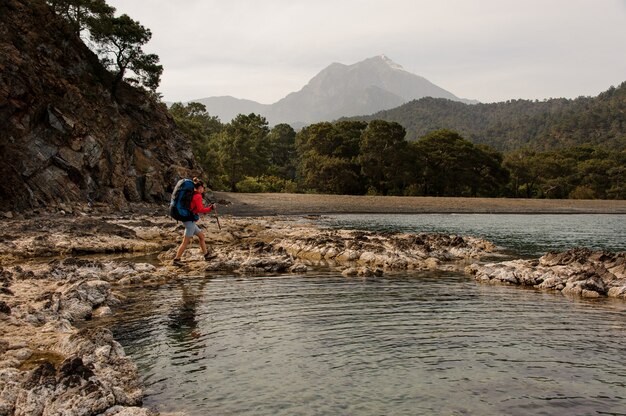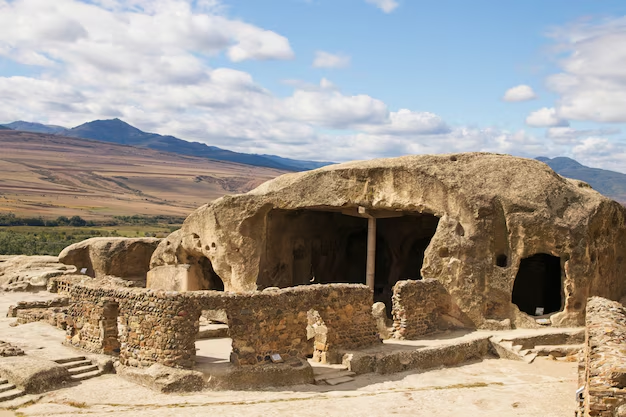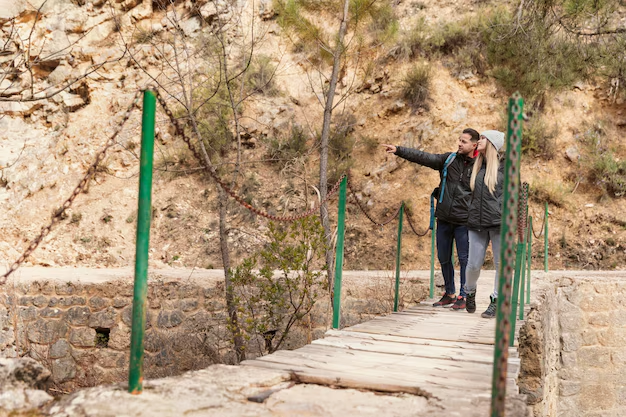Mohenjo-Daro
The Indus Valley Civilization is one of the oldest urban cultures in the world, and Mohenjo-Daro stands as a testament to its grandeur. This ancient city, dating back approximately 5,000 years, offers a glimpse into a sophisticated society that thrived long before the Egyptian pyramids were built. In this blog, we will explore the fascinating history of Mohenjo-Daro, its archaeological significance, and the contemporary challenges faced by the communities living near it, including the nearby Manchar Lake.

A Journey to Mohenjo-Daro
Starting from Larkana, the journey to Mohenjo-Daro is about 35 kilometers. As the sun rises, the day is filled with anticipation. The plan is to explore Mohenjo-Daro first and then head towards Manchar Lake, with hopes of witnessing a stunning sunset. Mohenjo-Daro is renowned for being one of the most well-preserved ancient cities of the Indus Valley, and the excitement to explore its ruins is palpable.
The ride through Larkana reveals a city that is waking up. The streets, initially quiet, soon become lively with the hustle and bustle of morning activities. Larkana is not just any city; it is the birthplace of prominent political figures like Zulfiqar Ali Bhutto and Benazir Bhutto, and their influence is evident throughout the area.
Arrival at Mohenjo-Daro
Upon arrival at the entrance of Mohenjo-Daro, the excitement builds. The site spans over 550 acres, making it nearly five times the size of Vatican City. It is part of UNESCO’s World Heritage list, recognized for its archaeological significance. The excavations that began in 1911 unveiled a city that was remarkably advanced for its time.
The Upper District
The exploration starts at the upper district, also known as the citadel. This area houses some of the most important monuments of the city, including the Great Bath, which was used for religious rituals. What’s fascinating is that this ancient tank was constructed with a layer of tar at its bottom to prevent water wastage, showcasing the engineering prowess of the time. The city was equipped with a sophisticated sewage system, and every house had access to toilets, indicating a high standard of living.
The Lower District
Moving to the lower district, known as the DK area, the layout reveals a well-planned city with a grid-like structure. This area was residential and could accommodate around 60,000 people. Artifacts found here suggest connections between the locals of Mohenjo-Daro and those from Mesopotamia, hinting at trade and cultural exchanges.
Despite its grandeur, the reasons behind the city’s eventual decline remain a mystery. Some theories suggest environmental changes, while others point to cultural shifts. Regardless, the legacy of Mohenjo-Daro continues to captivate historians and archaeologists alike.
Journey to Manchar Lake
After soaking in the rich history of Mohenjo-Daro, the next destination is Manchar Lake, about 190 kilometers away. The transition from the ancient ruins to the natural beauty of the lake is a refreshing change. As the journey continues, the landscape transforms, offering glimpses of rural life and the challenges faced by local communities.

Experiencing Manchar Lake
Upon reaching Manchar Lake, the first impression is its vastness. It is the largest freshwater lake in Pakistan, providing a vital resource for the surrounding communities. The local life here is deeply intertwined with the lake, as many families live on boats, relying on its waters for their livelihood.
Challenges Faced by Locals
However, the lake is not without its challenges. Recent environmental issues have affected the quality of water, making it difficult for locals to fish and sustain their families. The contamination from agricultural runoff has turned the waters toxic, drastically reducing the fish population and impacting the livelihoods of those who have depended on it for generations.
Only a few children from the lake village attend school, highlighting the educational challenges faced by the community. The hope for a better future rests on the shoulders of the younger generation, but the obstacles are significant.
Finding Accommodation in Sehwan
As the day draws to a close, the focus shifts to finding accommodation in Sehwan. After a long day of exploration, a comfortable place to rest is essential. The search leads to Lal Shahbaz Motel, a recently opened establishment that offers cleanliness and comfort, an important factor after a hot day of travel.
Culinary Delights
Dining in Sehwan offers a delightful experience. The local restaurants provide an array of delicious dishes, showcasing the rich culinary heritage of the region. After a satisfying meal, the day concludes with reflections on the adventures experienced and the stories witnessed throughout the journey.
Mohenjodaro: A Journey Through the Indus Valley Civilization
The ancient city of Mohenjodaro, a prominent site of the Indus Valley Civilization, offers a glimpse into a sophisticated urban life that flourished over 4,500 years ago. Despite its ruins, the city tells stories of advanced engineering, urban planning, and cultural practices that continue to intrigue historians and archaeologists alike. This article delves into the rich history, archaeological findings, and the significance of Mohenjodaro, inviting readers to explore its mysteries.

The Historical Context of Mohenjodaro
Mohenjodaro, located in modern-day Pakistan, was one of the largest cities of the ancient Indus Valley Civilization. Established around 2500 BCE, it served as a major urban center and trade hub. The civilization is renowned for its well-planned cities, advanced drainage systems, and impressive architecture. However, the reasons for the city’s decline around 1500 BCE remain a topic of debate among scholars.
Discovery and Excavation
The ruins of Mohenjodaro were rediscovered in the early 20th century, with significant excavations commencing in the 1920s. Sir John Marshall led the initial excavations, revealing the city’s extensive layout and various artifacts. Over the years, many other archaeologists contributed to the explorations, uncovering the remnants of this once-thriving metropolis.
- 1912 – Initial discovery by archaeologists.
- 1920s – Major excavations led by Sir John Marshall.
- Artifacts discovered include pottery, tools, and religious idols.
Architectural Marvels of Mohenjodaro
The architecture of Mohenjodaro exemplifies the ingenuity of the Indus Valley people. The city was designed with a grid-like layout, featuring wide streets and sophisticated drainage systems. One of the most notable structures is the Great Bath, believed to have held religious significance.

The Great Bath
The Great Bath is a large, public water tank that showcases the advanced engineering skills of the civilization. It is surrounded by a series of rooms, possibly used for changing and preparing for rituals. The bath is a testament to the importance of water in their culture, suggesting a community that valued cleanliness and ritualistic bathing.
Drainage Systems
Mohenjodaro was equipped with an advanced drainage system, which included covered drains along the streets and individual drainage for homes. This system indicates a high level of urban planning and concern for hygiene, setting a standard for future civilizations.
Artifacts and Cultural Insights
Excavations at Mohenjodaro have yielded a plethora of artifacts that provide insights into the daily lives of its inhabitants. Items such as pottery, tools, ornaments, and seals have been discovered, each telling a story of the people who once thrived in this city.
- Pottery: Various types of pottery were found, indicating trade and daily usage.
- Seals: The seals often depicted animals and script, suggesting a form of writing and possibly trade transactions.
- Tools and Ornaments: Tools made from bronze and ornaments made from gold and semi-precious stones showcase the craftsmanship of the era.
Religious Practices and Beliefs
The religious practices of the Indus Valley Civilization are still not fully understood, but several artifacts suggest a polytheistic belief system. Statues of deities and ritualistic items point to a culture that placed significant emphasis on spirituality.
The Unicorn Seal
One of the most intriguing artifacts is the unicorn seal, which features a mythical creature. Its significance remains debated, but it likely held religious or cultural importance, reflecting the civilization’s beliefs and artistic expression.
The Legacy of Mohenjodaro
Despite being only partially excavated—approximately 20% of the city—Mohenjodaro has been recognized as a UNESCO World Heritage Site, highlighting its global significance. The remaining 80% of the city continues to lie beneath the earth, preserving countless secrets waiting to be uncovered.
Modern Implications and Preservation Efforts
Today, Mohenjodaro stands as a symbol of cultural pride and historical significance for Pakistan. Preservation efforts are crucial to protect the ruins from natural erosion and human interference. The site attracts tourists and researchers alike, eager to learn about the ancient civilization that once thrived there.
Challenges to Preservation
Preserving Mohenjodaro poses challenges due to environmental factors and the need for sustainable tourism. However, ongoing efforts by the government and archaeological organizations aim to maintain the site’s integrity while promoting awareness of its historical importance.
Visiting Mohenjodaro: A Journey Through Time
For those interested in exploring the ancient city, visiting Mohenjodaro offers a unique opportunity to step back in time. The site provides guided tours that delve into the history and significance of various structures and artifacts.

What to Expect
- Guided tours explaining the history and importance of the ruins.
- Exhibitions of artifacts in the nearby museum.
- Scenic views of the archaeological site and surrounding landscape.
Conclusion
Mohenjodaro remains a testament to the ingenuity and sophistication of the Indus Valley Civilization. Its ruins tell a story of a society that achieved remarkable advancements in urban planning, architecture, and culture. As we continue to uncover the secrets of this ancient city, Mohenjodaro not only enriches our understanding of history but also inspires us to appreciate the complexities of human civilization.
The exploration of Mohenjo-Daro and Manchar Lake is not just about witnessing ancient ruins or enjoying natural beauty. It is about understanding the rich tapestry of history, culture, and the challenges faced by modern communities. Mohenjo-Daro, with its advanced urban planning and engineering, serves as a reminder of human ingenuity, while Manchar Lake symbolizes the delicate balance between nature and human life.
As we reflect on these experiences, it becomes clear that the stories of the past and present are interconnected. The hope for a brighter future for the communities around Manchar Lake lies in education, environmental awareness, and sustainable practices. The journey continues, and with it, the quest to uncover more about this fascinating region and its people.
Thank you for joining this exploration of Mohenjo-Daro and Manchar Lake. Your support and interest in these stories are invaluable, helping to keep the legacy of these remarkable places alive.
